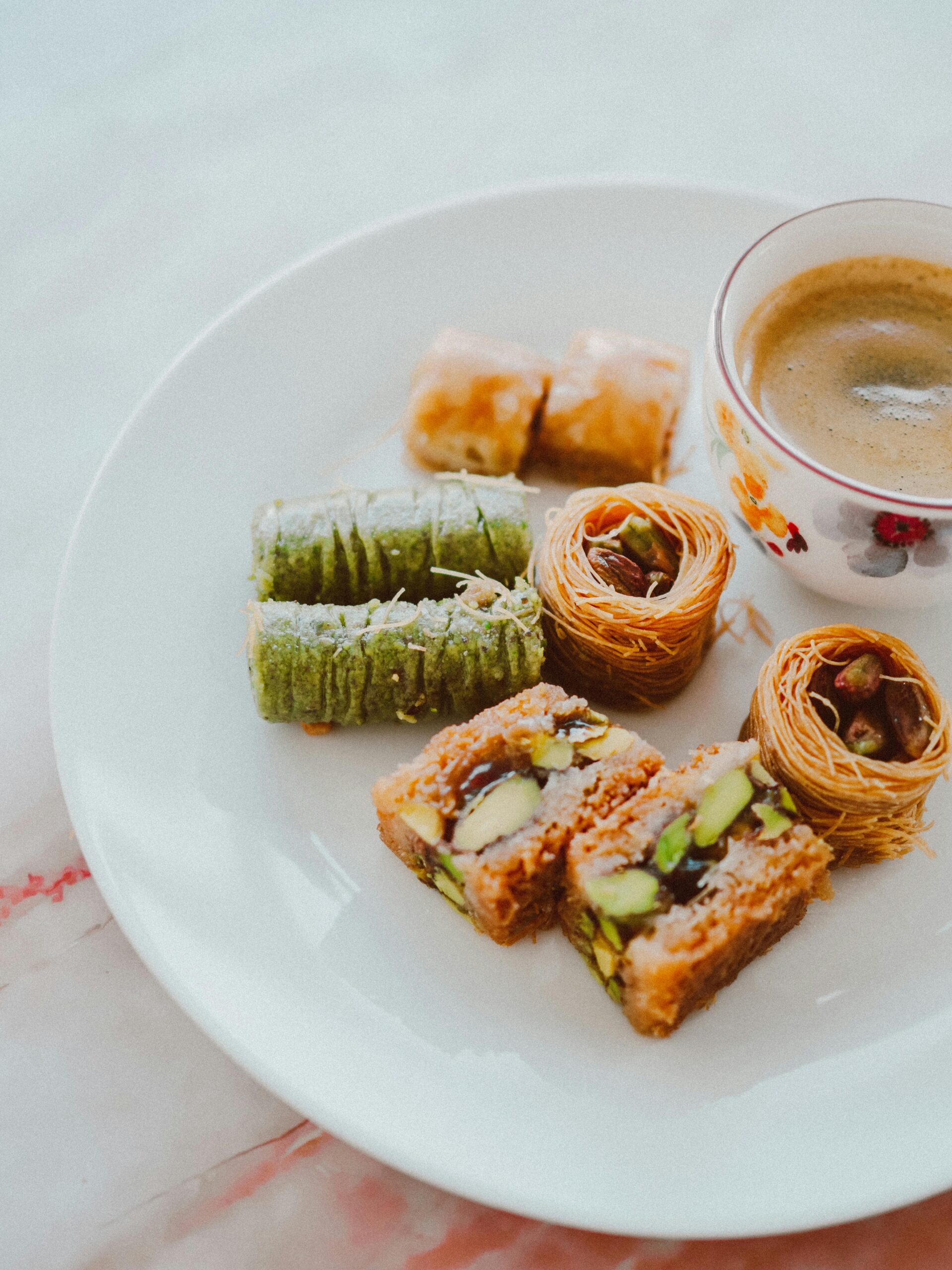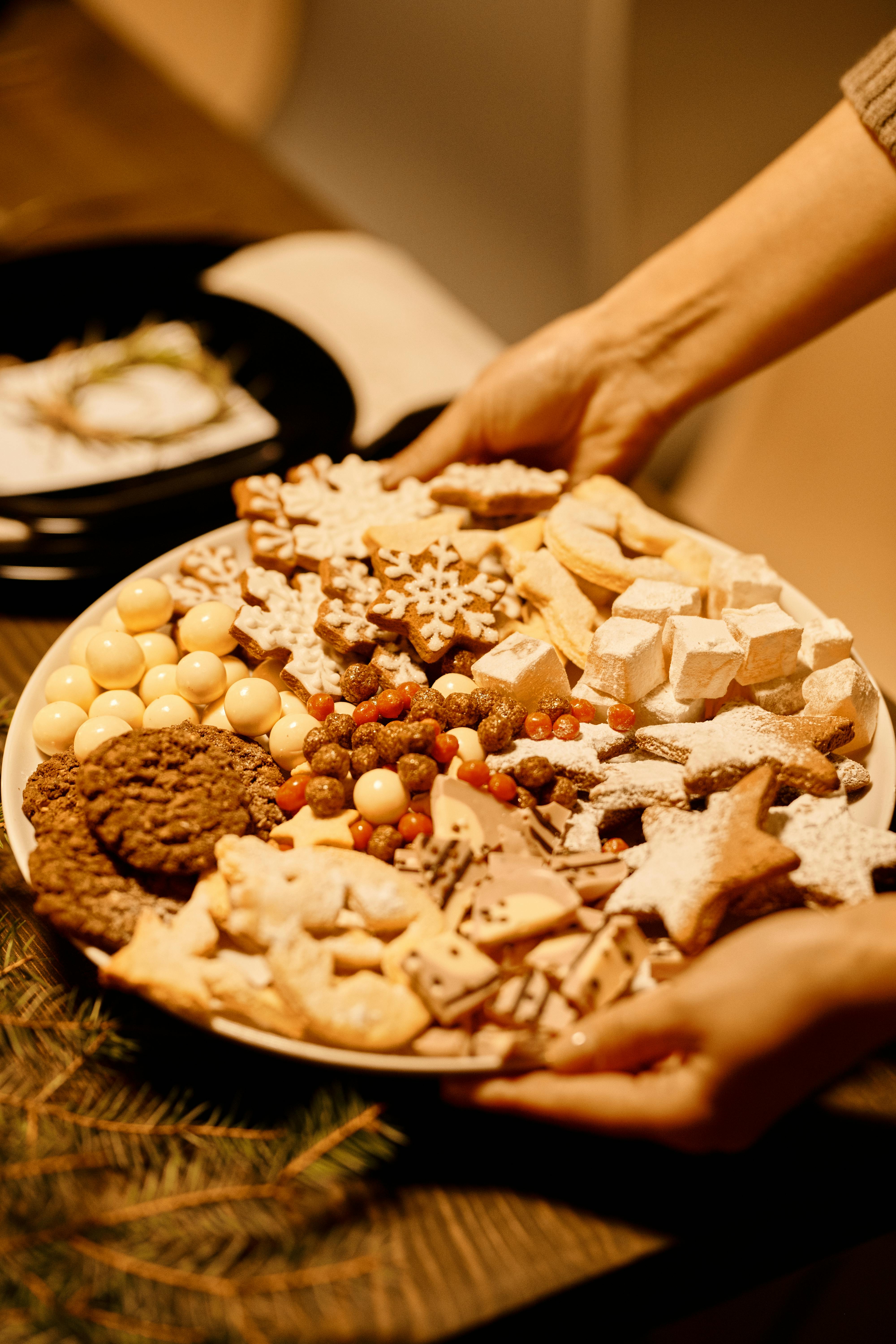Ramadan Sweet Treats

Ramadan Sweet Treats are very much part of the Ramadan celebrations.
In Egypt, the arrival of Ramadan brings not only a spiritual atmosphere but also the irresistible aroma of sweet treats wafting through homes and bustling streets. In the evenings, street vendors line the roads preparing delicious sweet treats.
They expertly fry Atayef, small stuffed pancakes filled with nuts or sweet cheese, before dunking them into fragrant syrup.
Zalabya, sweet, doughnut-like nuggets the size of large marbles are fried by vendors until they are perfectly golden, they then bathe them in sweet aromatic syrup.

Kunafa, with its crispy golden layers of shredded filo dough wrapped around nuts or creamy fillings, and soaked in fragrant syrup, glisten in shop windows, alongside Basbousa, a semolina cake infused with coconut and sweetened with sugar syrup, which is another staple found on nearly every Egyptian table during Ramadan.
These desserts are not just indulgences but are deeply tied to the spirit of togetherness, as families gather to prepare and share these sweets, making them an essential part of Egypt’s Ramadan traditions.
The magic of Ramadan sweets isn’t just found in markets—it’s woven into the heart of Egyptian homes. Grandmothers, aunts, mothers, and sisters gather in kitchens, rolling out vast trays of Kahk, the powdered sugar-dusted butter cookies filled with dates, nuts, or sweet honey paste, Mamoul with its wonderful date filling and Ghoreyebah, beautiful melt-in-the-mouth button shortbread-like cookies.

These delicate biscuits are lovingly prepared for Iftar and also in anticipation of Eid , the celebration marking the end of the Fast. These biscuits are stored in large tins to welcome guests with generosity and joy.
The act of making these treats together is more than just a culinary tradition; it’s a cherished ritual of bonding, laughter, and storytelling, ensuring that the flavours of Ramadan are passed down through generations.
Desserts such as Rice pudding, Amadene and Mahalabeya are also favourites over Ramadan
Ramadan Sweet Treats are a Symbol of Celebration and Gratitude
- Ramadan is a month of spiritual discipline, self-reflection, and fasting from dawn to sunset.
- The act of breaking the fast (Iftar) is a moment of gratitude, and sweet treats symbolize joy and appreciation for the blessings received.
- Many families prepare special sweets only during Ramadan, making them highly anticipated and cherished.
Sweet Treats are Great for Sharing and to Show Generosity
- One of the core values of Ramadan is generosity, and sharing sweets with neighbours, friends, and the less fortunate is a common practice.
- Many communities organize charity iftars where traditional sweets are distributed to those in need.
They Show Hospitality and Help Re-Inforce Family Bonds
- Sweets play a key role in social gatherings, strengthening bonds between family and friends.
- In many households, generations come together to prepare traditional sweets, passing down recipes and techniques.
- Offering sweets to guests is a sign of hospitality and warmth, reinforcing the spirit of togetherness that defines Ramadan.
Sweet Treats Symbolise Sweetness and Spiritual Reflection
- Sweet flavours are often associated with the sweetness of faith, kindness, and good deeds during Ramadan.
- The act of indulging in a sweet treat after a day of fasting is a reminder of the balance between discipline and the enjoyment of life’s blessings.
- Many sweets contain ingredients like dates and honey, which hold spiritual and historical significance in Islamic tradition.
Whether you’re observing Ramadan or simply exploring Middle Eastern cuisine, these dishes offer a taste of tradition and nourishment. May this Holy month bring peace, reflection, and togetherness to all who celebrate.